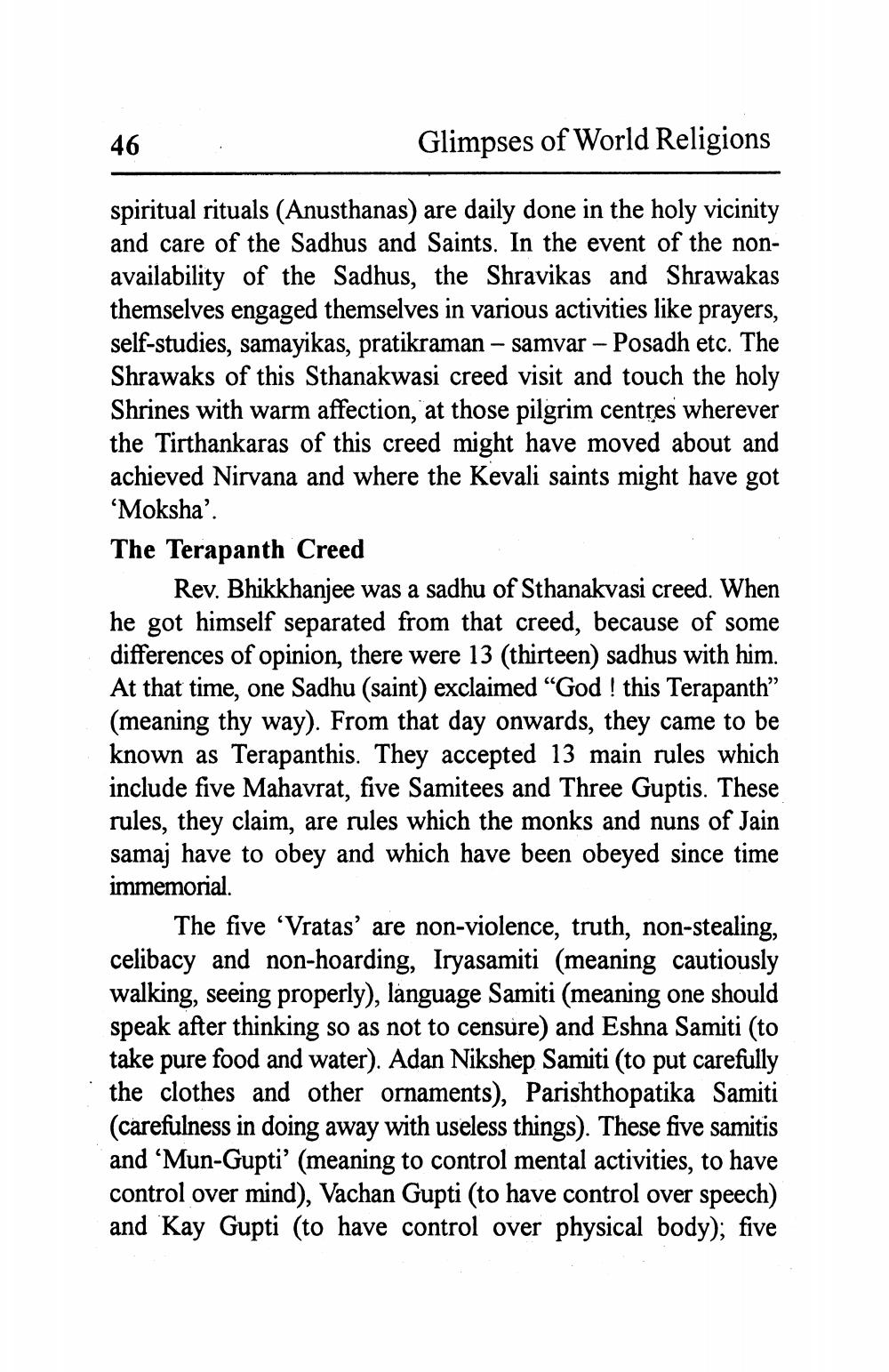________________
46
.
Glimpses of World Religions
spiritual rituals (Anusthanas) are daily done in the holy vicinity and care of the Sadhus and Saints. In the event of the nonavailability of the Sadhus, the Shravikas and Shrawakas themselves engaged themselves in various activities like prayers, self-studies, samayikas, pratikraman - samvar - Posadh etc. The Shrawaks of this Sthanakwasi creed visit and touch the holy Shrines with warm affection, at those pilgrim centres wherever the Tirthankaras of this creed might have moved about and achieved Nirvana and where the Kevali saints might have got ‘Moksha'. The Terapanth Creed
Rev. Bhikkhanjee was a sadhu of Sthanakvasi creed. When he got himself separated from that creed, because of some differences of opinion, there were 13 (thirteen) sadhus with him. At that time, one Sadhu (saint) exclaimed “God ! this Terapanth” (meaning thy way). From that day onwards, they came to be known as Terapanthis. They accepted 13 main rules which include five Mahavrat, five Samitees and Three Guptis. These rules, they claim, are rules which the monks and nuns of Jain samaj have to obey and which have been obeyed since time immemorial
The five ‘Vratas' are non-violence, truth, non-stealing, celibacy and non-hoarding, Iryasamiti (meaning cautiously walking, seeing properly), language Samiti (meaning one should speak after thinking so as not to censure) and Eshna Samiti (to take pure food and water). Adan Nikshep Samiti (to put carefully the clothes and other ornaments), Parishthopatika Samiti (carefulness in doing away with useless things). These five samitis and ‘Mun-Gupti' (meaning to control mental activities, to have control over mind), Vachan Gupti (to have control over speech) and Kay Gupti (to have control over physical body); five




